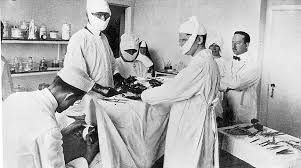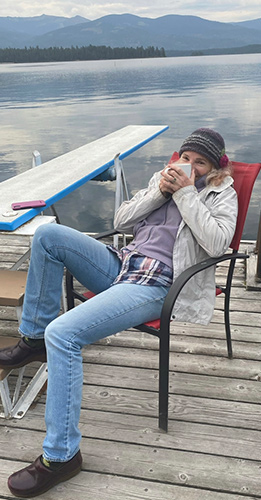Seattle Plastic Surgeon blogs about how much surgery has changed in just a few decades.
Sometimes it just astounds me how much surgery has changed since my days as a medical student. There was a time when hernia patients spent an entire week in the hospital following surgery. They were admitted the night before, a bazillion lab tests were done, they got an enema after dinner and a sleeping pill before bedtime. After surgery, they were given morphine injections, Jello and broth and bed baths. Their incisions were checked everyday and after a week their stitches came out and they finally went home. Fast forward to today and a hernia patient checks into an outpatient surgery center in the morning and by lunch time is home eating a ham sandwich and watching Breaking Bad reruns. How did all of this happen in just over twenty to thrity years?
Many of the changes have come about for economic reasons. Keeping someone in the hospital for a week costs as much or more than a brand new Mini Cooper. Insurance companies began to balk at these costs when I was a surgery resident in the 80’s. I remember being shocked (shocked!) the first time some bozo from an insurance plan told me to discharge a hemorrhoid patient after just two days in the hospital. I was used to waiting until those patients had managed to have their first bowel movement post op. It was just, well, tradition. So we started sending them home earlier and they did fine. In fact, they did better than they if they were in the hospital being poked and prodded and woken up at midnight for vital signs.
Anesthesia has changed a lot too. Back in the day, general anesthesia was almost guaranteed to leave a patient vomiting for a day or two after surgery. These days, the anesthetic agents are much less nauseating and the anti-nausea medications much more effective. And with spinal anesthesia, nausea is very rare. I have not had to admit a patient to the hospital for nausea and vomiting and dehydration in at least ten years.
And surgical procedures have changed. Take that hernia patient and his ham sandwich. Thirty years ago he would have a six inch long incision in his groin and sutures tied so tightly that standing up straight would be difficult. He would need a lot of narcotic pain meds which would make him nauseated. He wouldn’t be able to keep the Jello down so he would need an intravenous line for a few more days. He can’t go home until he can eat. In contrast, these days the hernia is usually fixed from the inside out. He has a couple of little incisions where the fiber optic scope was inserted to gently pull the hernia sac back into the abdomen when it belongs. Then a plug of mesh is used to fill up the defect. It’s slick and so much more gentle on the patient than fixing a hernia from the outside in. Our patient is a little bit sore but will likely feel good enough to return to his desk job in a day or two, narcotic free.
So despite all the griping about our health care delivery system, it is actually getting better, more convenient and safer. Now if someone could figure out how to make it less expensive. But that’s another blog.
Thanks for reading! Dr. Lisa Lynn Sowder




 @lisalynnsowder
@lisalynnsowder
